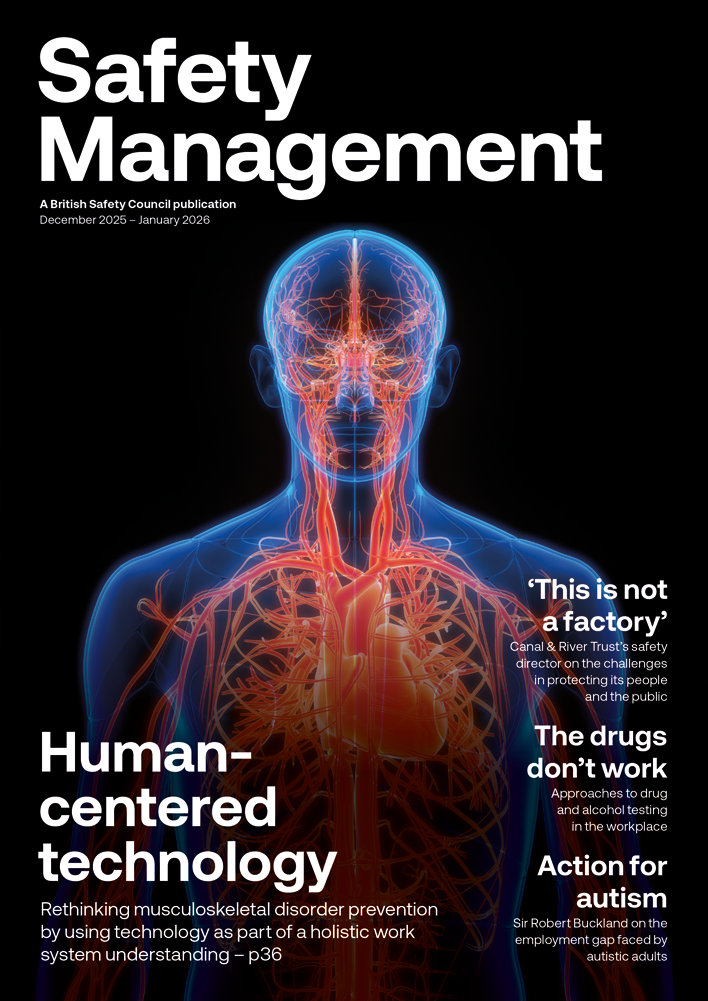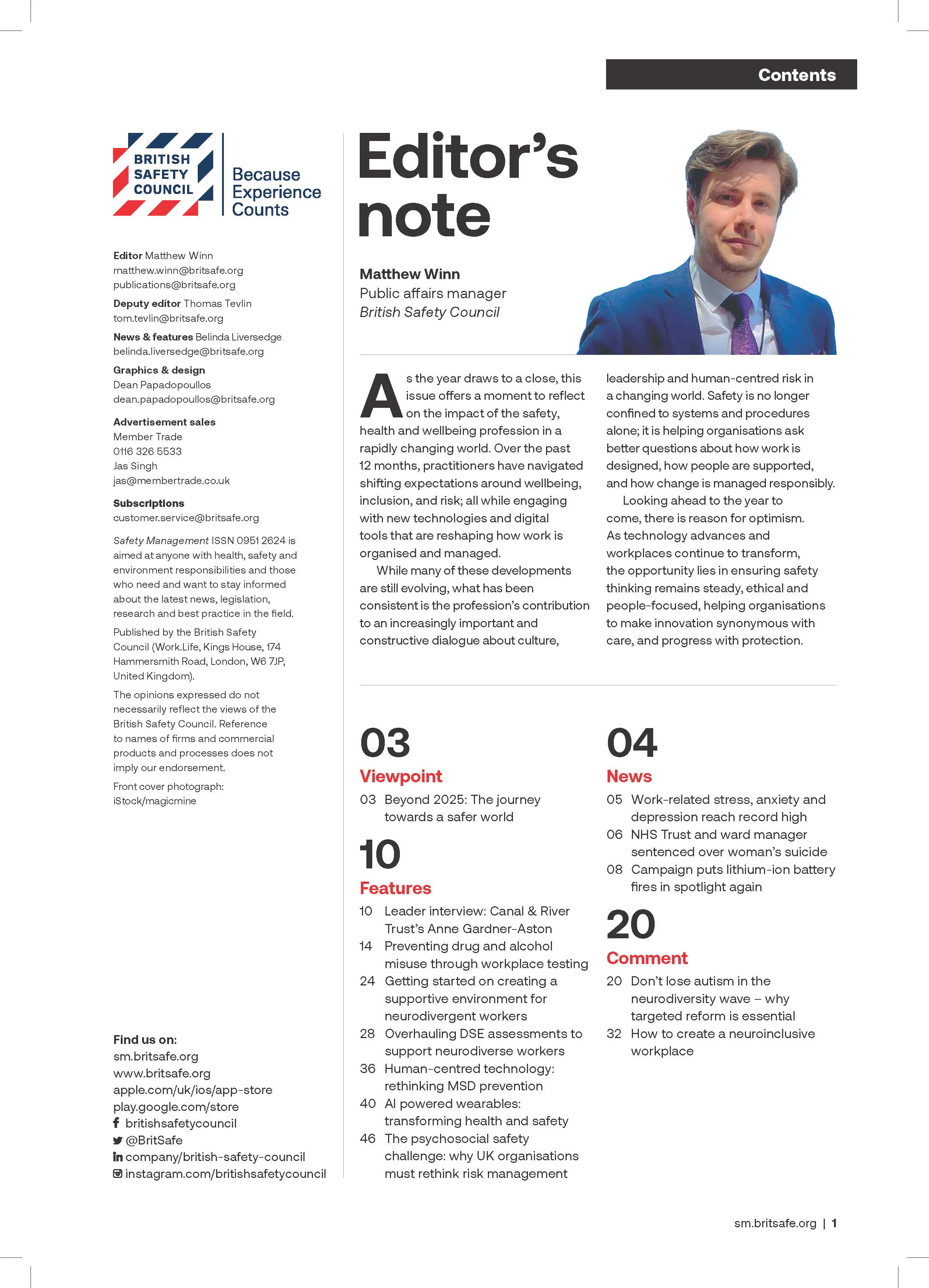It’s a year since Labour came to power with manifesto commitments to fix the failed approach to the cladding and building safety scandal and deliver meaningful change.
Opinion
The building safety crisis: a year of Labour in power, still no end in sight for leaseholders
In that time, we have seen announcements, had many meetings with government, Homes England, the Building Safety Regulator, the National Housing Federation, the G15 group of London’s leading housing associations, the Leasehold Advisory Service, developers, insurers and a range of others. But on the ground – in the eyes of leaseholders and residents who remain trapped – nothing has changed.
The devastating fire that destroyed the Spectrum building in Dagenham, the Grenfell Tower Inquiry’s Phase 2 Report, and the House of Commons’ Public Accounts Committee’s blunt assessment of the “appalling impact” of remediation failures have all made national headlines. But despite these reminders of the very real, very human cost of inaction, hundreds of thousands of people across the country face an uncertain future. The financial and emotional harm continues, the limbo perpetuates – Labour has failed to get the grip it promised in opposition and is failing to deliver on its manifesto commitments on building safety.
 Photograph: iStock
Photograph: iStock
Eight years after Grenfell, over six years since our campaign first launched, we may have seen progress, but innocent leaseholders need and deserve much more than the perversely complicated “solution” put forward by the previous government. We are still trapped in homes wrapped in dangerous cladding and a range of fire safety defects – we feel left behind by a system that continues to prioritise the interests of business over ordinary people. This is the reality, this is our lived experience, this is our undeniable truth.
1. A daily life of fear, stress and financial devastation
Living in an unsafe building is not just a technical issue – it’s a human tragedy. Every day, leaseholders and residents across the country wake up knowing that their homes could become a death trap. The psychological toll of that is profound – anxiety, insomnia, depression, and even Post-Traumatic Stress Disorder are common. Families are stuck.
Young professionals are delaying starting families or moving for their careers. Parents are putting their children to bed wondering if tonight will be when the fire alarm sounds for real and they have 10 minutes to escape. And all of this is exacerbated by a crushing financial burden even where leaseholders are deemed qualifying and, particularly, where they have been labelled ‘non-qualifying’ and ruled out of equal protection. People are still paying hand over fist for interim safety costs like waking watches and eye-watering insurance premiums – often many multiples of what they used to pay. People are still being forced to pay for non-cladding remediation in buildings of all heights.
Despite promises made by mortgage lenders to ‘consider’ lending on impacted flats over two years ago, people still face onerous hurdles when trying to sell. Life choices are put on hold – the opportunity cost is huge.
2. A system still designed to protect everyone but leaseholders
While the former government moved to make major developers pay, the oversight of this has been invisible, the actual pace of remediation remains glacial, and disputes continue over the heads of leaseholders. The threat of banning developers from building new homes was announced in March 2023 with a great deal of fanfare; however, the previous and current government seem too frightened to use these powers.
Labour’s Remediation Acceleration Plan – announced last December with misleading headlines focusing on a fraction of unsafe buildings across the country – will need legislation at some unknown point in the future. Too often, industry is still being asked to ‘do the right thing’ voluntarily – despite years of evidence that many will do anything but in the absence of firm intervention.
Developers, freeholders, housing associations, contractors, construction product manufacturers, architects and others all played a huge role in the systemic failure that allowed unsafe buildings – people’s homes – to be built and signed off as safe. Yet Labour now relies on these same parties to meet its target to build 1.5 million homes over this Parliament. The warm words about our safety being the utmost priority continue but there is little supporting action despite the promises of the Deputy Prime Minister. The interests of leaseholders in existing unsafe buildings remain at the bottom of the chain.
 Photograph: iStock
Photograph: iStock
3. Government promises fall flat as leaseholders pay the price
The Remediation Acceleration Plan remains a work in progress at best, with no accompanying legislation and no progress on non-qualifying leaseholders, under-11m buildings, non-cladding defects or buildings insurance extortion. The Government may now be ‘considering’ whether it ‘might’ support industry to reduce enormous insurance bills; however, there has been no movement other than yet more surveys. The recent Spending Review included some positive news for social housing, but private leaseholders seem to have been left out yet again.
Non-cladding defects – missing fire breaks, flammable insulation, faulty compartmentation – these are not minor technicalities. They are major life-critical failures that must be treated with the same urgency as cladding remediation. Yet we continue to hear government officials downplay the scale of the problem. In May, the Department told the Public Accounts Committee that it “had not seen significant evidence” that non-cladding defects were slowing remediation. That flies in the face of leaseholders’ lived experiences – and the mountain of evidence provided to government for years.
The refusal to protect so-called ‘non-qualifying’ leaseholders and a walking back of the promises to implement even a minor salve such as a joint-ownership amendment promised by DLUHC in November 2023 is also a glaring failure. These people are equally blameless and equally trapped. Yet this Government continues to decide that some leaseholders are more innocent than others and has chosen to ignore the cries for help from pensioners who have a small buy-to-let portfolio for a scrap of income in their retirement.
4. The change we still desperately need
We have told the Government what must be done. Repeatedly. And not just this Government – all the governments, Secretaries of State, ministers and civil servants we have met in the last six years or so. The steps required are not complicated. But what is still missing is the political will to act and take firm control of this crisis. We had hoped to see a Labour government hit the ground running but the last year has been wasted as officials have focused on changing behaviours over time rather than making people’s homes safe as quickly as possible.
So, what do we need to see?
A. Central oversight and control – a data-led approach
Create a single version of the truth – an official register of all unsafe buildings, their current remediation status and all interested parties.
Use the machinery in place to build account management infrastructure on top for the remediation lifecycle – from identification to assessment to interim measures to remediation to sign-off. Join up all stakeholders – including the Ministry of Housing, Communities and Local Government (MHCLG), the Building Safety Regulator and local regulators – with control from the centre.
Based on our experience, that control must come from Homes England’s Cladding Safety Scheme, where we have seen real leadership and people who actually “get it” and act quickly, putting leaseholders and residents at the heart of the process.
The statistics being published are outdated, reliant on self-reporting and do not paint the full picture of this crisis. 5,176 11m+ buildings are being ‘monitored’ but there is no grip. Enforcement activities have ramped up, but these are only leading to more waking watches and/or buildings being prohibited with people losing their homes.
Independence in the system, meaningful oversight and a focus on delivery is what we desperately need and keep being told we deserve. This is what Labour understood in opposition, and proposed in their Building Works Agency model, but has failed to implement in the last 12 months.

B. Certainty of holistic risk assessment – consistent standards accepted by all stakeholders
Successive governments are directly responsible for this crisis, with decades of deregulation and warnings that were ignored. Alongside the serious bad practice enabled across industry, this led to the entirely avoidable loss of 72 lives at Grenfell Tower. Therefore, it is incumbent on the Government to do much, much more to provide certainty on holistic risk assessment for all fire safety defects both external and internal. No more relying on ‘experts’ – many of whom played their part in causing, exacerbating and/or profiting from this crisis – who have no real understanding of what actually happens on the ground.
The move towards proportionality is understandable, as buildings under 18m can still be constructed using combustible materials; however, the disparity between life-critical fire-safety defects and relevant defects and regulatory requirements remains a cause of huge concern. In opposition, Labour recognised how these different definitions would inevitably lead to (at least) a two-tier system, yet now it is in power, it has chosen to retain the current approach.
There has been progress within the Cladding Safety Scheme, where funding matches risk on a Fire Risk Appraisal of External Walls. This is a step forward even if those lessons have had to be learned from the brutal reality caused by the failures of previous grant funding schemes. Non-cladding defects – such as compartmentation or fire doors – remain the elephant in the room, with no formal policy to deal with these risks and freeholders able to force huge costs onto non-qualifying leaseholders. This will be a huge issue for mid-rise buildings, and policy and operational measures must get ahead of this known issue rather than continue the pattern of the previous government by kicking the can down the road.
There must be consistency in the remediation process, and we have urged Labour to implement a move from EWS1 to a simple assessment of whether or not work to fix any fire safety defects is required. Introducing a ‘single version of the truth’ remediation register will help simplify the complicated ‘Comfort Letter’ process – whether by Homes England providing a single comfort letter for all unsafe buildings and/or allowing lenders access to their database. This would increase certainty and provide confidence to a flat sales market that remains in tatters.
C. Full protection for all leaseholders – make industry pay
All fire safety defects, cladding and non-cladding, must be funded at no cost to leaseholders – all of whom are the only innocent victims of this crisis.
In its manifesto, Labour promised to review how to better protect leaseholders, yet there has been nothing on this in the last year. The recent Spending Review announced a change in the social housing remediation strategy to allow providers ‘equal access’ to grant funding, which has been one of our campaign asks for close to five years and so is welcome. This should help to accelerate remediation at those buildings but, as always, questions remain on what equal access actually means, how alternative cost recovery – for example from the developers who acted as a contractor at those buildings – will take place, and on the source of the new funding. Crucially, we are still waiting to see whether the Government will ensure housing associations allow shared owners to sublet at market rates or to buy back flats that no longer meet the needs of this particularly vulnerable cohort but are unsellable on the open market.
We are also hopeful that, finally, there will be a move towards protecting innocent leaseholders in ‘low-rise’ buildings; however, there remains no clarity on if or when that will happen.
Labour’s manifesto also said it would ensure those responsible for the building safety crisis pay to put it right, but despite strong words from Angela Rayner in opposition, MHCLG has disagreed with the Public Accounts Committee’s recommendation to make product manufacturers pay to relieve the pressure on leaseholders and tenants.
We have also seen Labour propose exempting smaller developers from the (postponed) Building Safety Levy – many of those companies are responsible for this crisis yet Labour is now considering not making them pay, the very opposite of their manifesto commitment.
A simple solution, whereby all unsafe homes are fixed, with funding from industry-wide levies or taxation still seems some way off.
D. Are we truly Building a Safer Future?
Future buildings of all heights must meet tighter fire and structural safety standards. Combustible materials are now banned in high-rise buildings but are still allowed in buildings below that height. The gaming of the regulatory system is set to continue as buildings are constructed slightly below height thresholds that would require enhanced safety measures.
The Building Safety Regulator is still not operating anywhere close to business as usual – whether for existing or new buildings – and there are known challenges with its operating model, resourcing and the information provided to applicants. However, this is not ‘red tape’ for the sake of it and 70 per cent of applications have been rejected as they do not meet the legal requirements. These problems are solvable and must not be used as justification to deregulate and reintroduce the regulatory capture and ‘value engineering’ that caused this crisis.
5. Promises made, promises not kept
Last September, the Prime Minister told Parliament he considers himself “someone responsible for building safety”. What that means in practice is still unclear. But every day that goes by without action, the lives of real people continue to unravel. We expect to see an update on the Remediation Acceleration Plan in ‘summer’, although whether that is in July or in September remains uncertain. Each day that passes in silence only causes more pain, more anxiety, more suffering.
We know there are people across the ‘system’ who share our frustration. Who understand the urgency. Who want to act. But the truth is that we are still seeing too much of the old status quo – a system built around distraction and deflection. As Karim Mussilhy of Grenfell United told the Grenfell Tower Inquiry, the system isn’t broken, it was built this way.
Our faith in Labour – in ‘government’ – has nearly run out. There is only so long innocent leaseholders can keep telling themselves that it’s always darkest before the dawn. For many leaseholders across the country, it has been night for years and years – and some are running out of time.
Labour’s silence on key issues – non-qualifying leaseholders, non-cladding defects, insurance, lending, shared ownership – is deafening. Their failure to include building safety in last year’s King’s Speech was a flashing red warning light.
When Labour was in opposition, they stood alongside us. They championed our cause, promised change and said they would get a grip. But now in government, their priorities have shifted. Perhaps they fear spooking the developers and housing associations they now rely on to deliver 1.5m new homes. Perhaps they fear the financial implications of doing what is just. Perhaps they have just been subsumed by the culture of government.
MHCLG has not made an evidence-based case to end this crisis with any authority. In February, it wrote to the Public Accounts Committee and said its estimates and forecasts – on the number of buildings requiring remediation and remediation costs would be updated “during this year”. The gap between policy costs and current available funding remains another known unknown. All we have seen on this so far is a £4.5m contract awarded to a consultancy although, worryingly, those objectives include identifying and assessing possible changes to building regulations.
The Prime Minister’s calls to cut red tape and deregulate in the interests of growth – and the failure to understand the impact on homes being built safely – are eerily reminiscent of those in David Cameron’s red-tape challenge in 2011 with MHCLG opining that housing is not impacted even though the focus on deregulating will once again perpetuate throughout government no matter what they may hope. 100 per cent mortgages have returned and the FCA is considering removing the 12-month safety net before a home can be repossessed. The more things change, the more they stay the same.
The first rung of the housing ladder remains broken – second steppers are unable to sell so they rent out their flats, non-qualifying leaseholders are unable to sell anywhere close to fair value as the non-qualifying status is passed on, and shared owners are stuck with renting out flats they no longer need or leaving them empty.
The recent documentary on Netflix, Grenfell Uncovered, tells the story of the chain of events that led to the Grenfell disaster in 2017 and lays bare how the tragic loss of 72 lives was entirely avoidable. Today, tomorrow and every day, we stand by the bereaved, survivors, residents, and the Grenfell community in their fight for justice. Justice that remains years away.
As the documentary draws to a close, the truth is set out in black and white: “Hundreds of thousands of residents still live in buildings wrapped in unsafe cladding.” The legacy of Grenfell is the unresolved cladding and building safety scandal – Labour is not doing anywhere near enough to prevent history repeating itself.
If the Prime Minister truly believes in justice, in safety, and in fairness, and wants to deliver CHANGE, then show us. Not with more letters, not with vague statements in Parliament, not with more warm words. But with action. Justice is not optional, and our safety must not be left to chance.
Because for the hundreds of thousands of ordinary people still trapped in unsafe homes, this is not just policy made at one remove from reality on the ground. It is life and death.
For more information on the End Our Cladding Scandal campaign see:
endourcladdingscandal.org
@EOCS_Official
OPINION

How to create a neuroinclusive workplace
By John Robinson, Schofield Sweeney on 09 December 2025
The modern workplace is a diverse environment. Most workforces will be made up of individuals representing the majority of the groups protected under the Equality Act 2010.

Don’t lose autism in the neurodiversity wave – why targeted reform is essential
By Rt Hon Sir Robert Buckland KBE KC on 03 December 2025
Autistic adults have waited too long for meaningful reform. They have shared their experiences and expertise. Now they deserve action, accountability, and transformation.

Inclusion saves lives: embedding equality, diversity and inclusion (EDI) into global occupational safety and health
By Umer Changaiz, CMIOSH on 03 December 2025



